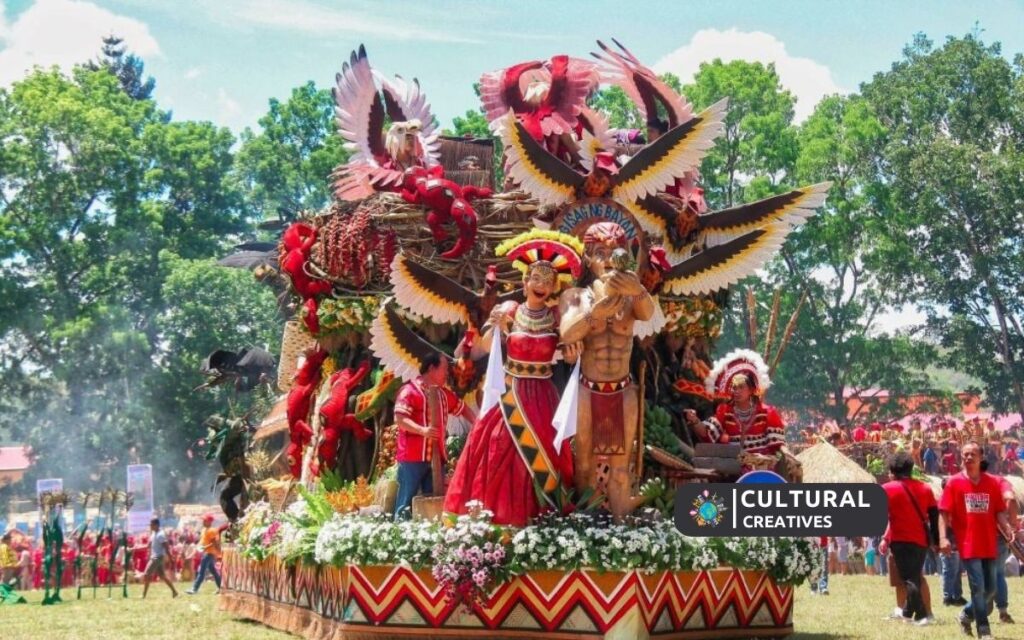The Kaamulan Festival is an ethnic cultural festival in Bukidnon, Philippines, celebrated annually in February and March. It honors the customs and traditions of the seven ethnic tribal groups in the region.
Bukidnon’s Kaamulan Festival stands out as a showcase of the indigenous people’s history, folklore, and traditions. Unlike other Philippine festivals that often have religious overtones, Kaamulan stems from tribal roots and focuses on the rich tapestry of indigenous culture.
It commences with a series of rituals, including tribal weddings, agricultural thanksgiving, and traditional sports competitions. Dancers adorned in colorful, hand-made costumes take to the streets, moving to the rhythm of indigenous instruments. The festival is a major draw for tourists who seek authentic cultural experiences, offering a captivating glimpse into the lives of the Lumads, the native inhabitants of Bukidnon. Enthusiastic attendees revel in the unique blend of street dancing, parades, and exhibitions that highlight the unity and diversity of the region’s age-old cultures.
Exploring The Origins Of Kaamulan
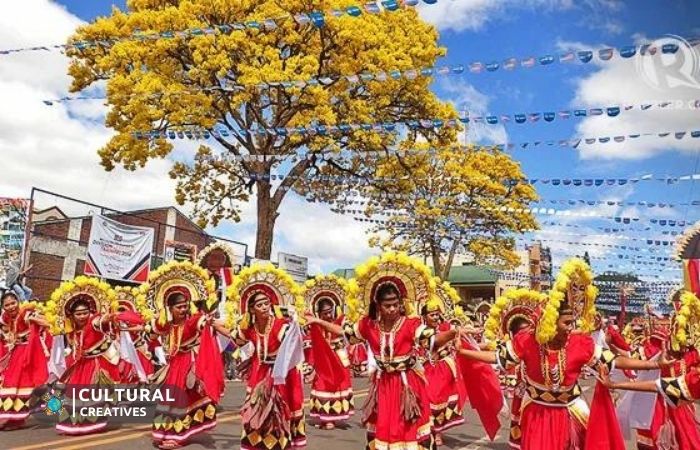
The origin story of Kaamulan harks back to the ancestral traditions of the Bukidnon tribes. Derived from the local term ‘kaamul’, which means to gather, Kaamulan Festival originally started as a form of thanksgiving—a coming together for a bountiful harvest, a peace pact, or a wedding ceremony. With time, this gathering transformed into an annual festival, commemorating the rich history and resplendent culture of the indigenous peoples.
Significance Of Kaamulan In Philippine Festivity
The Kaamulan Festival stands out among other Philippine festivities for its deep anthropological significance. It is not only an event of merrymaking but also an educational journey that brings visitors closer to the ethnological roots of the nation. Participants don traditional costumes, meticulously crafted from indigenous materials, and perform rituals that have been passed down through generations. These spirited events encapsulate the fusion of ancestral beliefs and modern Filipino identity, making Kaamulan a significant emblem of the Philippines’ cultural treasure trove.
Ethnic Roots And Cultural

The festival is more than just a showcase of songs, dances, and colorful costumes. It is a profound celebration rooted in the rich heritage of Bukidnon, reflecting the varied customs, beliefs, and ways of life of its indigenous people. The festival is a living museum, a dynamic expression of identity that weaves a tapestry of history and tradition into modern festivities. Exploring its ethnic roots and cultural significance provides a deeper understanding of the festival’s importance to the indigenous communities and the nation as a whole.
Understanding The Indigenous Tribes Of Bukidnon
The heart of the Kaamulan Festival lies with the indigenous tribes of Bukidnon, known as the “Seven Hill Tribes”. These include the Higaonon, Talaandig, Manobo, Matigsalug, Tigwahanon, Umayamnon, and Bukidnon tribes. Each group contributes its unique traditions, practices, and rituals to the festival. This cultural mosaic is vital for understanding the spirit and essence of the Kaamulan celebration.
- Higaonon – known for their peace pacts, known locally as ‘tampudas hu balagen’.
- Talaandig – custodians of the ancient art of soil painting and spiritual practices.
- Manobo – famed for their intricate weaving and musical instruments.
- Matigsalug – river people with a rich oral tradition and riverine culture.
- Tigwahanon – forest dwellers with extensive knowledge of herbal medicine.
- Umayamnon – noted for their epic chants and agriculture-based rituals.
- Bukidnon – recognized for their kaamulan – communal gatherings which inspired the festival.
The Ethnological Importance
The festival’s value transcends its annual merrymaking. It is a bountiful field for anthropologists, historians, and cultural enthusiasts who wish to explore and understand the complex tapestry of Bukidnon’s tribal communities. By celebrating the Kaamulan, we recognize and respect the indigenous way of life, ensuring that these traditions continue to thrive in the rapidly changing world.
During the festival, the indigenous people showcase:
- Rituals that have been passed down for generations, which hold the wisdom of the elders and ancestors.
- Dances and music that tell stories of war, harvest, and community life.
- Handicrafts that reflect the skill and artistry of the tribal people, often made from materials sourced from the land they live in.
The Kaamulan Festival serves not just as a celebration, but as a platform for indigenous people to voice their stories, struggles, and aspirations. As an event celebrated with genuine spirit and fervor, it provides a rare opportunity for the different tribes to come together in solidarity and mutual respect. The festival is a bridge linking the past to the present, and it plays a critical role in shaping the identity of future generations.
Grandeur Of The Celebrations

The Kaamulan Festival is a spectacle of cultural magnificence, a time when the streets surge with life and the colorful tapestry of Mindanao’s indigenous heritage unfolds. Celebrating the customs and traditions of the seven ethnic tribes of Bukidnon, this annual event is more than just a fiesta; it is a profound homage to the roots of the region.
Visual Feast: The Colorful Parades And Costumes
At the core of the Kaamulan Festival’s grandeur are the mesmerizing parades that turn the streets into a canvas of exuberant hues. Each tribe showcases their distinct style and identity through an array of elaborate costumes that narrate stories of their history and folklore. These displays are not just visually striking but are crafted with immense skill, reflecting the pride of the people in their ancestral craftsmanship:
- Brightly woven fabrics that encapsulate traditional weaving techniques
- Handcrafted accessories that utilize native beads, metals, and feathers
- Headdresses that rise majestically, signaling the presence of tribal royalty
The processions are further brought to life with rhythmic dances and chants, where each step and tune is teeming with cultural significance. The meticulous attention to detail in the construction of these costumes and floats is testimony to the community’s dedication to preserving their heritage.
Rituals And Ceremonies: A Deeper Cultural Profundity
Beyond the pageantry, the Kaamulan Festival offers a window into the soul of the tribes through various rituals and ceremonies. These acts are steeped in tradition and spirituality, forming the undercurrent of the festival’s essence:
| Ritual | Purpose |
|---|---|
| Datuship Rituals | Enthrone new tribal leaders and reaffirm their roles within the community |
| Pamuhat Ritual | Offer thanks to the divine spirits and ancestors for blessings and guidance |
| Tagulambong | Invoke protection and good fortune for the tribes in the upcoming year |
These centuries-old practices not only serve as an exhibition of enduring spirituality but also fortify the social fabric of the tribes, passing wisdom from the elders to the youth. It’s a poignant reminder of the deep cultural profundity that resonates in the air throughout the Kaamulan Festival.
The Magnetism Of Traditional Music And Dance
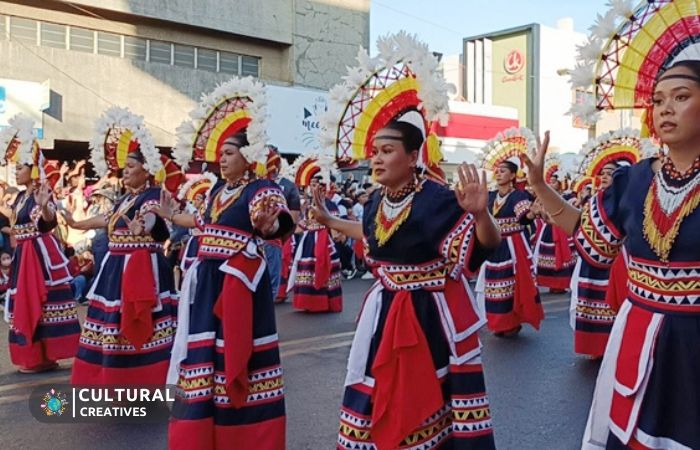
The Magnetism of Traditional Music and Dance truly captivates at the heart of the Kaamulan Festival. This event, a cultural cornerstone for the indigenous people of Bukidnon, Philippines, serves as a pulsating showcase of ancestral musical heritage and dynamic dance narratives. What draws audiences from around the world isn’t just the spectacle of color and movement but the profound sense of community and history that each beat and step embodies. The rhythm and dance not only entertain but also bind the fabric of tribal identity.
The Role Of Music In Tribal Unity
Music is more than a background beat at the Kaamulan Festival; it’s the sonic glue that unites tribes. Traditional musical instruments such as the kudyapi (a two-stringed lute), the saluray (a bamboo zither), and various kinds of drums, generate a collective pulse that resonates through the crowd. These instruments date back generations and are crafted to tell stories, celebrate harvests, commemorate ancestors, and reinforce tribal affiliations.
- Communication among tribes: Distinct melodies act as musical signatures for each tribe, enabling members to recognize and celebrate their unique cultural identities.
- Synchronization of activities: Rhythmic patterns guide the synchronized movements in communal activities, creating a harmonious tribal flow.
- Preservation of heritage: Each song played is a testament to the tribe’s history, often passed down orally, preserving their legacy.
The unifying effect of music is palpable; it transcends language barriers and gathers people in shared experiences, evoking a sense of solidarity among the wide variety of ethnic groups present.
Indigenous Dance Performances: A Living Tradition
The Kaamulan Festival’s dance performances are not merely for display; they are a living tradition, a kinetic reflection of life. Each movement has meaning, whether it’s mimicking the agility of animals in the wild or reenacting ancestral tales of courage and community.
| Dance | Tribe | Significance |
|---|---|---|
| Binanog | Talaandig | Eagle dance, symbolizing freedom and grace |
| Kaliga | Higaonon | Celebrates peace and friendship |
| Kitanglad | Bukidnon | Represents the mountains and the spirits that dwell within |
Dance acts as a narrative thread that weaves the past into the present, ensuring ancestral wisdom continues to thrive within young generations. Performers don traditional attire, their colorful patterns and accessories as meaningful as the dance steps themselves.
- Engagement with folklore: Dance brings to life the rich tapestry of myths and legends inherent to each tribe.
- Intergenerational bonding: Elders pass on their knowledge and skills to youth through the act of dancing, cementing cultural continuity.
- Community celebration: Dance performances during the festival are communal, a collective act that strengthens the social fabric.
These living traditions are a powerful reminder of the importance of cultural preservation, allowing indigenous wisdom to flourish in the modern age.
The Art Of Storytelling Through Street Theater
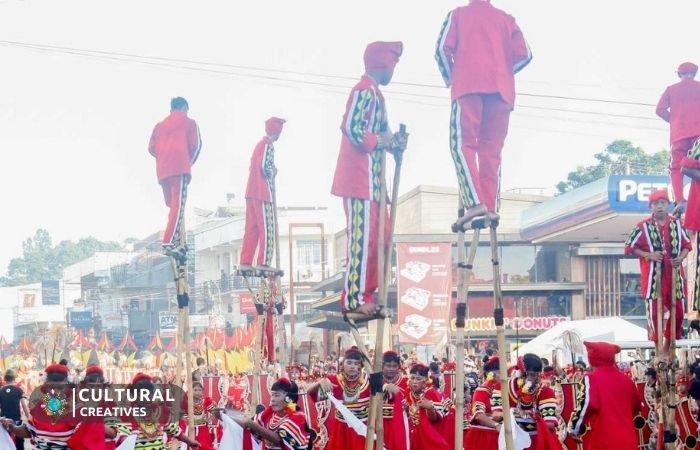
The festival is not just a celebration of culture; it is a dynamic canvas where stories of the past are vividly painted through the art of street theater. Here, every performance is a thread that weaves together the rich tapestry of the region’s ancestral heritage. Dancers, actors, and storytellers come together to create a spectacle that allows festival-goers to step back in time and experience the legends and histories that have shaped their community.
Theatrical Presentations: Narratives Of Ancestral Wisdom
We encounter a series of theatrical presentations gracing the streets during the Kaamulan Festival. These are not mere performances; they are masterful narratives spun from the ancestral wisdom of the indigenous people. The storytelling prowess on display is both an educational journey and an awe-inspiring experience that connects everyone to the cultural bedrock of the community.
- Epic reenactments of battles and historical events
- Folktales that impart moral lessons and cultural values
- Mythical tales featuring local deities and spirits
- Rituals and traditions that have been passed down through generations
Each performance is a profound display of authenticity and creativity, inviting onlookers to immerse themselves in a cultural narrative that spans centuries.
Impact Of Street Theater On Preserving Heritage
Street theater plays a crucial role in the Kaamulan Festival, acting not only as a form of entertainment but as a powerful medium for cultural preservation. It translates complex cultural nuances into compelling visual stories that resonate with audiences of all ages.
Let’s explore some key impacts:
| Impact | Explanation |
|---|---|
| Educational Influence | Teaches and reminds younger generations about their roots and traditions |
| Cultural Continuity | Ensures that customs and beliefs are actively practiced and not forgotten |
| Community Engagement | Brings people together, fostering a strong sense of identity and unity |
| Artistic Expression | Provides an outlet for local artisans to showcase their craft and innovate |
In essence, street theater is indispensable for the festival—a testament to the enduring spirit of the indigenous peoples’ heritage. It is this interactive engagement that ensures the flames of tradition continue to burn brightly for future generations to cherish and uphold.
Culinary Journey Into Tribal Flavors

The festival isn’t just a visual and cultural spectacle; it’s a culinary expedition that offers a glimpse into the rich gastronomy of the indigenous tribes of Bukidnon. Taking a deep dive into this aspect of the festival, you’ll encounter an array of traditional dishes that tell the story of a people deeply connected to their land and heritage. Here, every bite is a narrative of survival, celebration, and community.
Traditional Cuisines: A Taste Of Heritage
The true essence of the Kaamulan Festival is expressed through its authentic tribal cuisines. These dishes are more than just food; they are cultural heirlooms, passed down through generations. The indigenous groups, including the Higaonon, Manobo, and Talaandig tribes, offer a tapestry of flavors reflective of their unique customs and lifestyle.
Diving into the festival’s traditional cuisines, you encounter Pinikpikan, a ceremonial chicken dish that’s carefully beaten before cooking to enhance flavor. Another must-try is Binaki, a sweet corn cake that represents the region’s corn farming abundance. Each ethnic group has its twist on these dishes, providing a distinct taste of a place wrapped in every meal.
- Pinikpikan – Beaten chicken dish symbolizing the tribal ritual
- Binaki – Sweet corn cake echoing the area’s agricultural heritage
- Pais – Fish or meat wrapped in banana leaves and steamed to perfection
Food Preparations: Symbolic Gestures And Rituals
In the heart of the festival, food preparation takes on a ritualistic significance. Every slice and simmer is imbued with ancestral practices that pay homage to the tribal gods and forebears. The meticulous preparations are a fusion of flavor and spirituality, with each step thought to bring blessings and good fortune.
The tribes utilize ingredients found in their natural surroundings, like river fish or wild game, conveying a deep respect for nature’s bounty. The slow-cooking methods, often over an open flame, not only impart a smoky richness but also signify the communal aspect of sharing meals. Such a culinary process is steeped in symbolism and community values, anchoring the food’s significance far beyond its taste.
| Dish | Ingredients | Symbolism |
|---|---|---|
| Pinikpikan | Chicken, Salt, Native herbs | Life’s cycle, Sacrificial ritual |
| Binaki | Sweet corn, Milk, Sugar | Abundance, Farming pride |
| Pais | Fish or Meat, Banana leaves | Harmony with nature, Sustenance |
Economic And Tourism Impacts
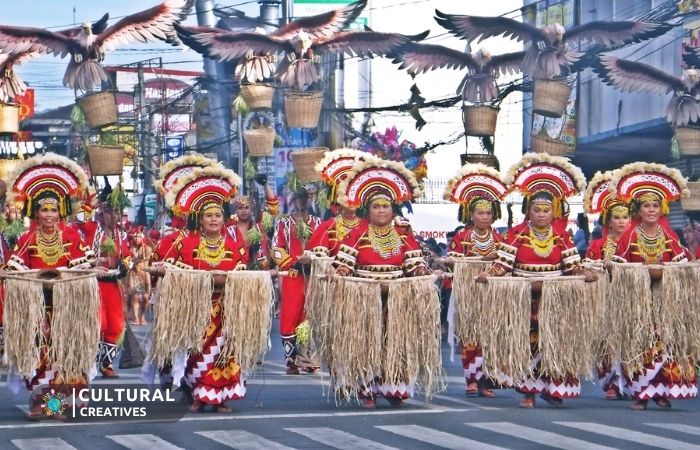
The festival is not just a kaleidoscope of colors, dances, and cultural heritage; it’s also a significant contributor to the local and regional economy of Bukidnon. The festival’s ability to attract tourists translates into multiple economic benefits, energizing businesses and communities throughout the region. Let’s delve into the multifaceted economic and tourism impacts this celebration brings.
Boosting Local Economy Through Festival Tourism
The festival serves as a catalyst for economic vibrancy in Bukidnon. The surge of visitors demands goods and services, directly benefiting local businesses. A closer look reveals:
- Increased Sales for shops and vendors selling traditional crafts, food, and memorabilia.
- Hotel and Lodging Boom, with accommodations often booked months in advance.
- Employment Opportunities across sectors like hospitality, transport, and event management.
Local entrepreneurs seize this period to showcase their products and services, sparking an economic upturn. This upsurge is quantifiable; during the festival season, there’s a marked increase in the volume of transactions across the province.
Promotion Of Bukidnon Tourism And Culture
The Kaamulan Festival is more than just an economic engine; it is a spotlight on the rich tapestry of Bukidnon’s heritage. The festival’s components have significant implications:
| Cultural Showcase | Tourism Magnet |
|---|---|
| Traditional dances and music draw cultural enthusiasts from around the globe, keen on immersing themselves in the authentic Bukidnon experience. | As the festival gains international attention, it attracts a diverse audience, leading to a year-round interest in the region’s attractions. |
| The display of indigenous attire and rituals educates visitors, fostering a sense of appreciation and respect for local traditions. | Travel blogs, social media posts, and word-of-mouth recommendations from visitors amplify the festival’s reach and allure as a must-visit destination. |
Cultural preservation and promotion are at the heart of the festival. Each performance, art piece, and gastronomical delight tells the story of Bukidnon, inspiring tourists to delve deeper into the province’s history and beauty.
Challenges And Preservation Efforts
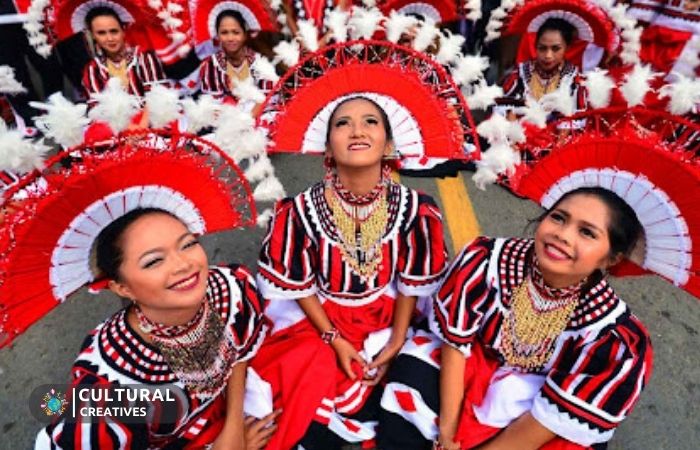
The Kaamulan Festival is a tapestry that showcases the rich culture of indigenous tribes in Bukidnon, Philippines. While the festival is a significant symbol of ethnic heritage, various challenges arise in the pursuit to keep this tradition alive and untainted in the midst of rapid modernization. Now, let’s dive into the intricacies of these challenges and explore how different entities are striving to preserve the integrity of this cultural gem.
Conservation Of Tribal Traditions In Modern Times
The digital era has introduced a myriad of ways to document and disseminate tribal customs, ensuring their legacy continues. Efforts include:
- Educational programs that teach the younger generation about traditional lore, dances, and crafts.
- Collaborations with cultural experts to curate authentic festival events.
- Technological advancements used to create digital archives of tribal knowledge.
These strategies aim to imbue a sense of pride within the community and encourage preservation of their unique cultural identity.
Challenges In Maintaining The Festival’s Authenticity
Despite efforts to maintain the authenticity of the festival, certain challenges persist:
| Challenge | Impact |
|---|---|
| Commercialization | Dilutes the festival’s cultural significance as traditional aspects are sometimes altered to appeal to a wider audience. |
| Generation Gap | Leads to a disconnect between the youth and their ancestral heritage, risking a decline in cultural transmission. |
| Environmental Concerns | Large-scale gatherings pose threats to the environment, which is closely tied to tribal traditions. |
In response to these challenges, concerted efforts are being made to limit commercial influences, foster intergenerational learning, and organize eco-friendly events.
Personal Experiences And Anecdotes

Diving into the heart of the festival through personal tales and spirited engagements is a journey like no other. This gathering, a tapestry of Mindanao’s rich culture, brings forth a medley of emotions, colors, and traditions. In this section, stories unfold beneath the energetic thrum of indigenous music and the dazzle of ethnic attire. These personal experiences and anecdotes offer an intimate glimpse into the festival’s soul-stirring essence.
Tales Of Revelry And Cultural Immersion
The Kaamulan Festival ignites a sense of unity and pride among the tribes of Bukidnon, each sharing their heritage with unabashed joy. The streets become a living museum, each corner whispering its own story to the attentive festival-goer. Here, personal anecdotes highlight the kaleidoscope of emotions felt during the revelry.
- Intimate encounters with tribal elders, passing down stories and chants as old as the hills they call home.
- Dancing shoulder-to-shoulder with locals, as the ground vibrates to the pulse of ancient rhythms.
- Savoring flavors unique to the Bukidnon palate, an adventure for taste buds craving authenticity.
Firsthand Accounts: Visitors’ And Participants’ Perspectives
These firsthand accounts shed light on the personal impacts of the festival, as seen through the eyes of both awestruck visitors and spirited festival participants.
| Visitor | Experience | Participant | Reflection |
|---|---|---|---|
| Travel Blogger | “An electrifying atmosphere where every moment is a photo waiting to be captured.” | Tribal Dancer | “Performing here is not just dance; it’s keeping the heartbeat of our culture alive.” |
| Cultural Enthusiast | “Witnessing traditions that have endured for generations is humbling and illuminating.” | Local Artisan | “Showcasing my crafts at Kaamulan connects me to others who value our heritage.” |
Fostering Unity And Cultural Pride
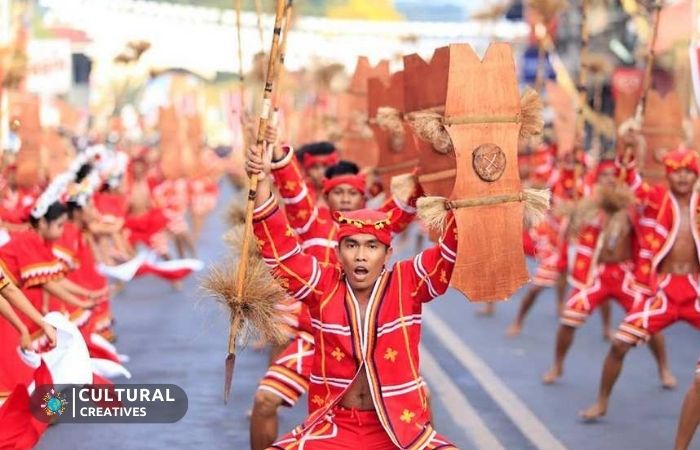
The f3.estival stands as a beacon of unity, bringing together the many ethnolinguistic tribes of the Bukidnon province in the Philippines. Celebrated every year, this festival is not just a feast for the senses with its explosion of colors and sounds, but also a profound manifestation of cultural pride and solidarity among the indigenous communities.
Kaamulan As A Platform For Ethnic Harmony
This annual event goes beyond mere celebration – it is a powerful platform where all the seven tribal groups of Bukidnon, including the Higaonon, Talaandig, Manobo, Matigsalug, Tigwahanon, Umayamnon, and Bukidnon, converge. The festival’s events are carefully woven together to showcase the exquisite tapestry of traditions and customs that exist in harmony within the region.
- Dances that tell stories of ancient times and traditional ways of life
- Musical exhibitions featuring indigenous instruments
- Rituals that honor the spiritual beliefs of the tribes
- Competitions that foster healthy community rivalry and showcase skills
These cultural exchanges serve as a foundation for mutual respect and understanding, solidifying ethnic harmony amidst diversity.
Cementing National Identity Through Cultural Celebrations
Kaamulan Festival transcends the local sphere, etching the identity of the Bukidnon tribes into the national consciousness. People from across the Philippine archipelago and even international visitors witness the rich cultural heritage that is an integral part of Filipino identity. The festival is a loud proclamation that diversity breeds strength and unity.
| Cultural Element | Role in National Identity |
|---|---|
| Traditional Attire | Symbolizes the uniqueness of Filipino heritage |
| Folk Songs and Dances | Preserve ancestral legacy and storytelling |
| Indigenous Crafts | Highlight creativity and artistry |
| Community Rituals | Represent shared spiritual and cultural beliefs |
Through the festival’s integration into the national calendar, it unites the Filipino people not only in celebration but also in a collective acknowledgment of their shared roots and pride in their cultural inheritance.
Conclusion
Celebrating the culture of Bukidnon, the Kaamulan Festival is a spectacle of heritage and joy. It draws visitors from across the globe into an immersive Philippine experience. Don’t miss next year’s festivities for a glimpse of ethnic traditions alive and thriving.

